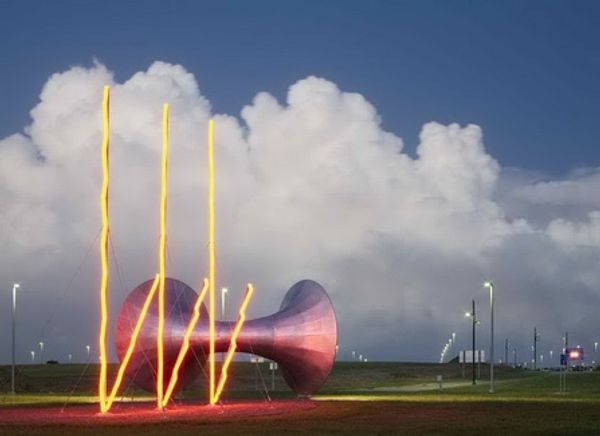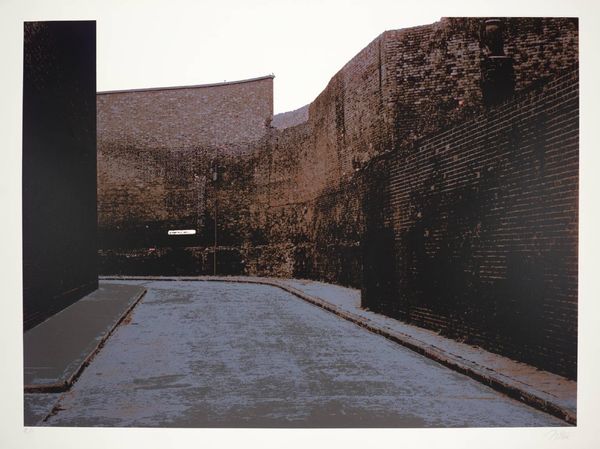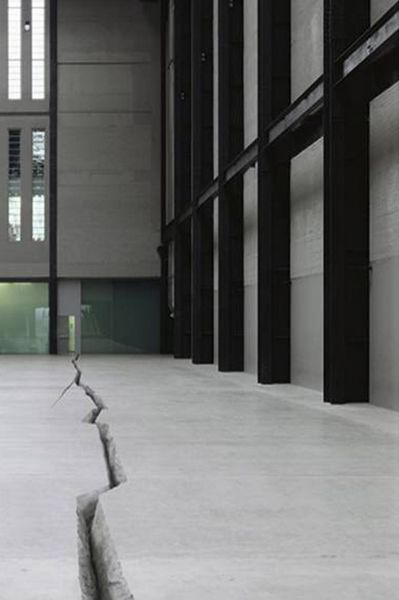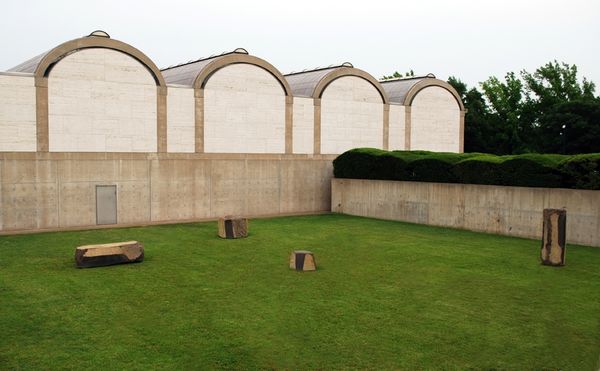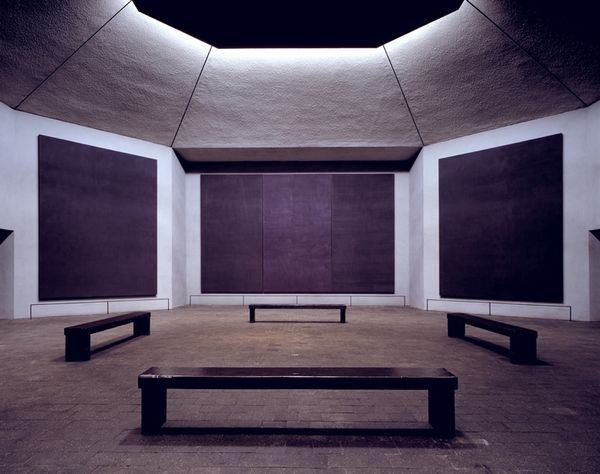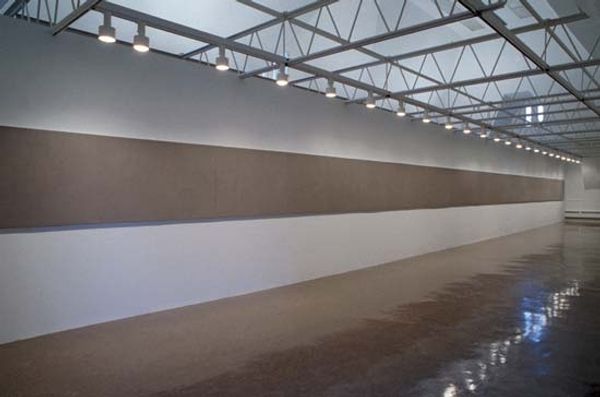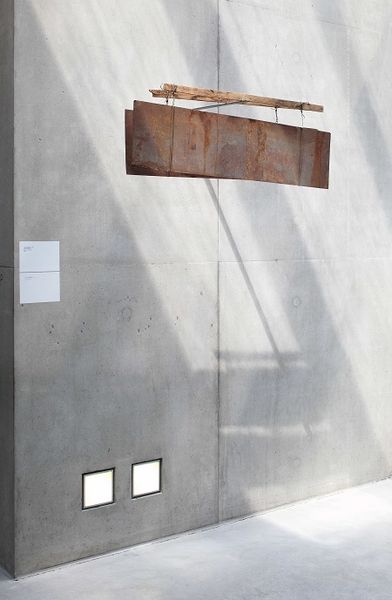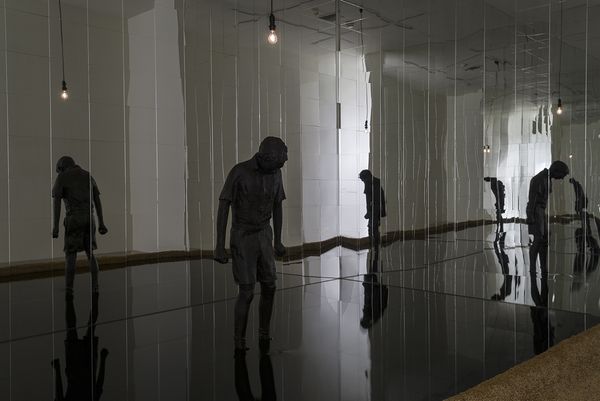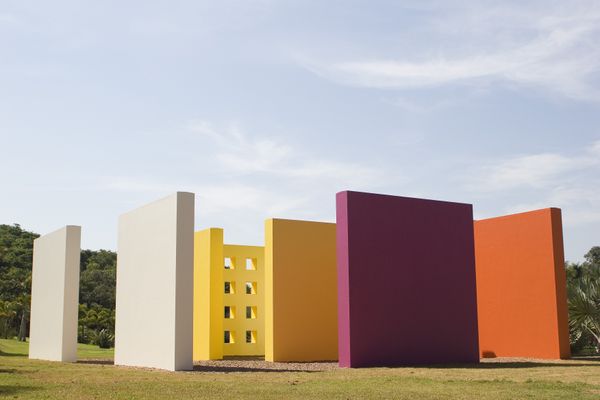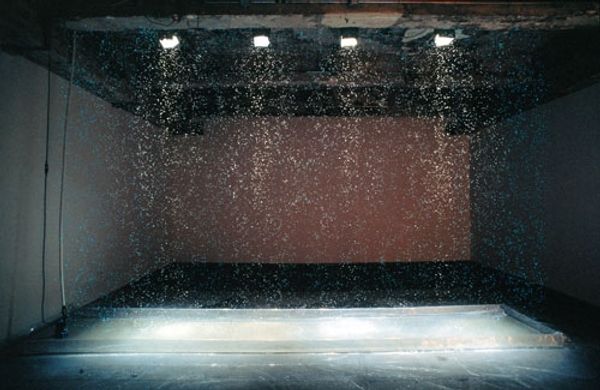
metal, sculpture, installation-art
#
metal
#
geometric
#
sculpture
#
installation-art
#
abstraction
#
line
#
italian-renaissance
#
modernism
Copyright: Fausto Melotti,Fair Use
Curator: Standing before us is Fausto Melotti's 1973 work, "Il viaggio della luna," crafted primarily from metal. What strikes you first about it? Editor: Well, the immediate impression is one of poised fragility. These metallic forms, especially against that stark background, seem incredibly delicate, almost as though a strong wind could scatter them. There is also a strong reference to modernist simplicity that relies on raw industrial components and repetitive geometric forms. Curator: That fragility speaks to Melotti’s broader artistic project. He often explored the intersection of sculpture, music, and poetry. There is something innately melancholic about this piece as though its linear structures evoke emotional responses from the viewer akin to lines of written poetry, which in turn become notes in a musical composition. Editor: Absolutely. The visible fabrication is vital here, I think. Melotti doesn't conceal the welding or the joints, which keeps our focus on process. Note, as well, the almost domestic feel from the various heights of each assemblage, conjuring familiar items from modern life arranged and repeated within domestic and factory settings. This connects directly with post-war discussions regarding Italian industry and art production. Curator: That reading really enriches the piece. Given that it was made during a period of political upheaval in Italy, could "Il viaggio della luna" perhaps also offer a subtle commentary on society’s own precariousness and aspirations in the post-war climate, or its desire to launch a "moonshot"? It appears to speak to gender imbalance through an artistic lens. What do you think about its symbolism of geometric figures juxtaposed within a post-industrial setting that seems overtly masculine? Editor: I see that entirely, yes. And if we examine the means of its production and distribution, the artist is using mass-produced metallic elements combined in a careful configuration. The piece evokes ideas of gender by reflecting the post-industrial, consumerist boom that challenged both society’s labor expectations as well as material production practices that influenced social norms and familial structures. Curator: So, a convergence of personal and collective histories reflected in these lines and planes. Looking at this one realizes how powerfully reductive yet communicative abstract art can be. Editor: Yes, it proves again how much the artist's hand, even in a work relying on repetition, communicates meaning about process, material, and history. The piece reveals something unique and universal that we take away, reflecting society’s needs and future goals.
Comments
No comments
Be the first to comment and join the conversation on the ultimate creative platform.
